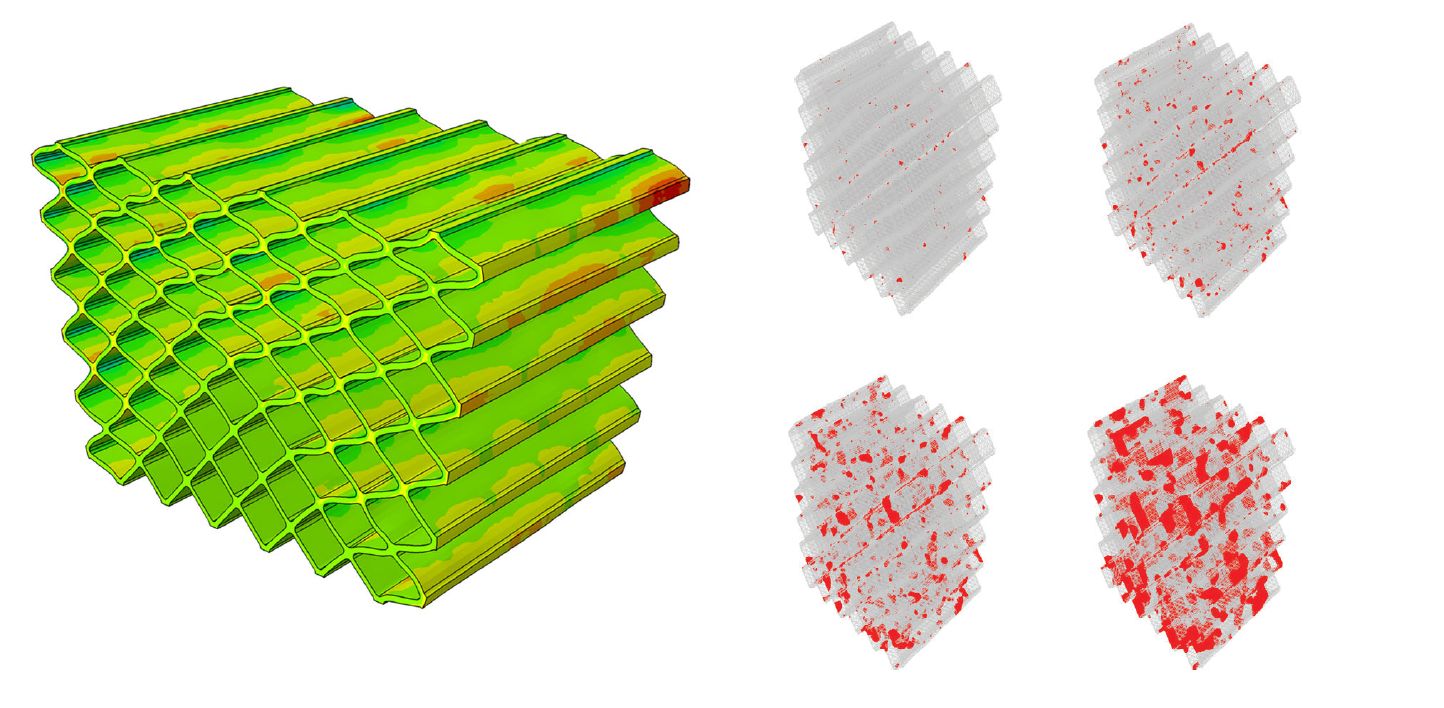You are here
Modelling fatigue crack growth in shape memory alloys
Dear iMechanicians, I hope that you find the below work interesting. We have developed a phase field-based computational framework for predicting fatigue crack nucleation and growth in Shape Memory Alloys. The model captures the role of transformation stresses, stress-strain hysteresis, and temperature. And this is demonstrated by computing Δε − N curves, quantifying Paris law parameters, and predicting fatigue crack growth rates in several geometries, including the fatigue failure of a 3D lattice structure.
M. Simoes, C. Braithwaite, A. Makaya, E. Martínez-Pañeda
Modelling fatigue crack growth in shape memory alloys
Fatigue Fract. Eng. Mater. Struct. (2022)
Abstract
We present a phase field-based framework for modelling fatigue damage in Shape Memory Alloys (SMAs). The model combines, for the first time: (i) a generalized phase field description of fracture, incorporating multiple phase field formulations, (ii) a constitutive model for SMAs, based on a Drucker–Prager form of the transformation surface, and (iii) a fatigue degradation function, with damage driven by both elastic and transformation strains. The theoretical framework is numerically implemented, and the resulting linearized system is solved using a robust monolithic scheme, based on quasi-Newton methods. Several paradigmatic boundary value problems are addressed to gain insight into the role of transformation stresses, stress-strain hysteresis, and temperature. Namely, we compute Δε − N curves, quantify Paris law parameters, and predict fatigue crack growth rates in several geometries. In addition, the potential of the model for solving large-scale problems is demonstrated by simulating the fatigue failure of a 3D lattice structure.
- Emilio Martínez Pañeda's blog
- Log in or register to post comments
- 1434 reads



Recent comments